Arriving in Ushuaia
At precisely 7:00 a.m., my flight touched down at Ushuaia Airport, greeted by light rain outside the window and a city shrouded in dark clouds. After picking up my luggage, I headed to the taxi counter inside the airport, where a staff member escorted me outside and arranged a taxi for me. The taxi fare in Ushuaia is comparable to using Uber in Buenos Aires. With the airport located close to the city center, the drive to my hotel took about 20 minutes. After dropping off my bags at the hotel, I set off on a peaceful stroll through the rainy streets, embracing the city’s moody weather.
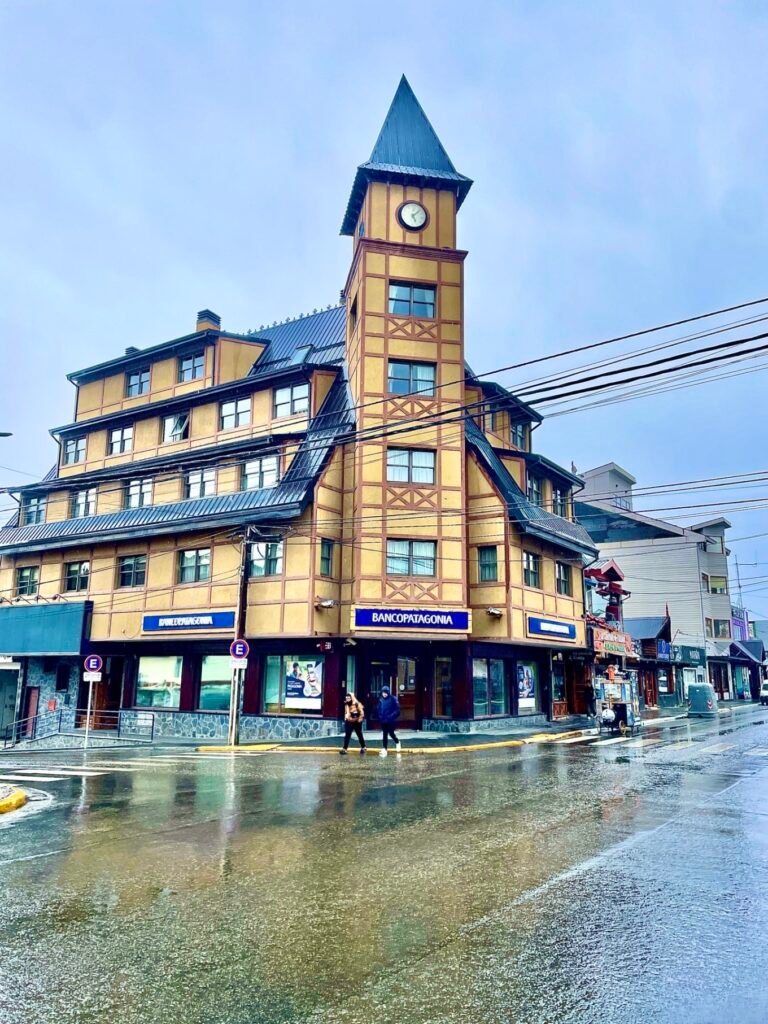
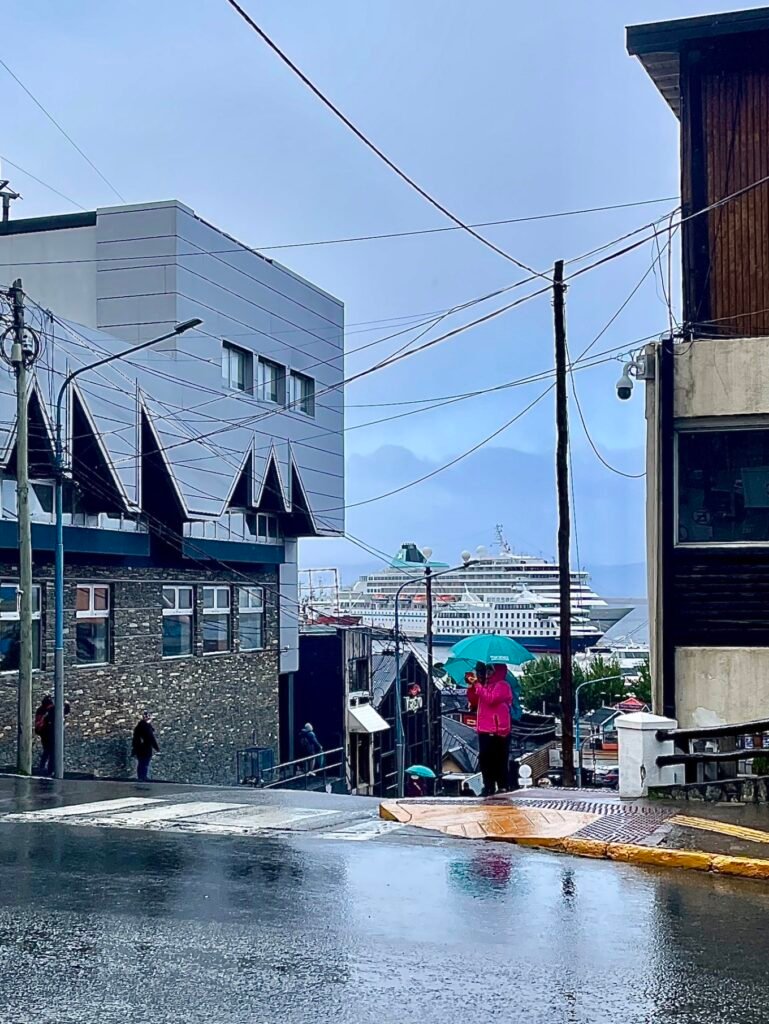
The Unique Beauty of Ushuaia
Ushuaia is a remarkably quiet and beautiful town, but its charm doesn’t come from tourist attractions or iconic landmarks. Instead, it lies in the town’s essence, a beauty you can feel at every moment. While many coastal towns exist around the world, and numerous others are nestled at the base of snow-capped mountains, Ushuaia uniquely combines both.
The colorful houses are built along the slopes of the surrounding mountains, stretching all the way down to the port. The town’s terrain is steep, with significant elevation changes—within just a few blocks, the altitude can shift by several dozen meters. This seamless blend of sea and mountains gives Ushuaia a distinct character that leaves a lasting impression.


An Afternoon Stroll through Ushuaia
By midday, the rain gradually stopped, leaving the town exceptionally clean, with every surface washed to perfection. The air felt crisp and refreshing, filling me with a sense of tranquility. I started my leisurely walk by the waterfront, slowly making my way up to the hillside. From there, I wandered back down toward the sea, with no set destination, simply indulging in the freedom of unhurried exploration.
As the sun dipped toward the horizon, I watched the town transform under shifting light, revealing new facets of its charm with every passing moment. The soft glow of lights from Antarctic-bound cruise ships flickered on, bringing life to the harbor as day gave way to night. This felt like the true essence of Ushuaia—quiet, simple, and beautifully immersed in the rhythms of the world’s southernmost city. It’s in moments like these that you discover the real way to experience Ushuaia, savoring both the serenity and the subtle hum of life at the end of the world.
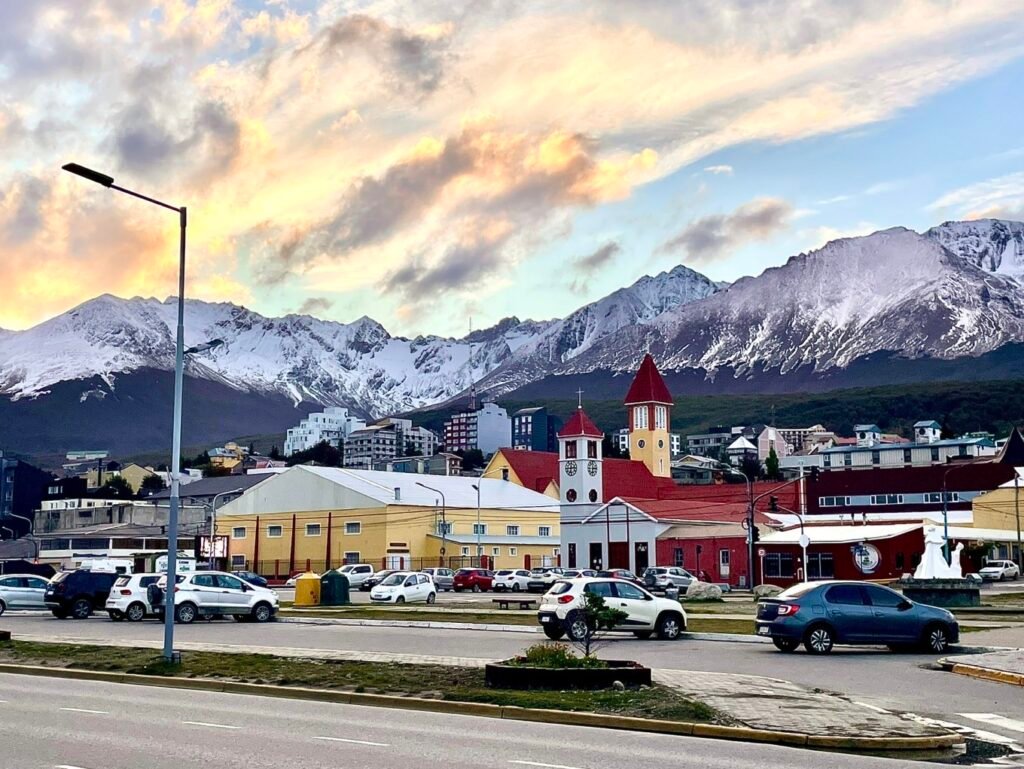
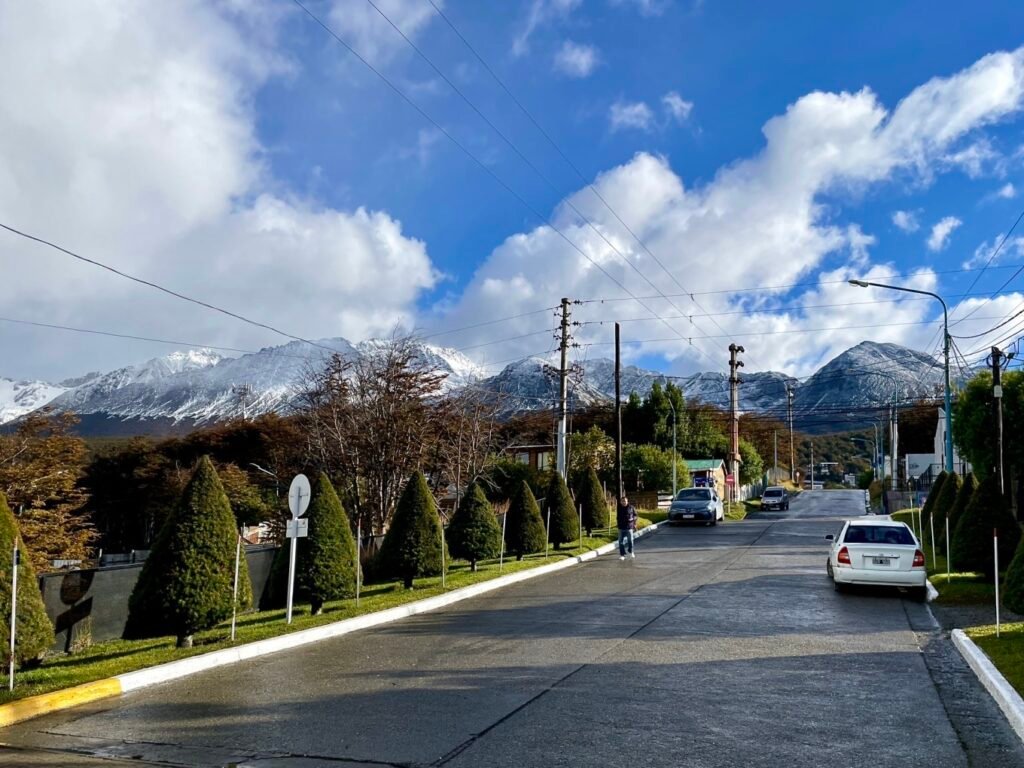
Of course, Ushuaia isn’t without attractions. There’s the Tierra del Fuego National Park, perfect for hiking and immersing yourself in nature. You can also take a boat tour to the southernmost lighthouse in the world, where you’ll encounter sea birds, sea lions, and penguins on a memorable day trip. Near the port, I noticed a blue double-decker sightseeing bus, offering a chance to explore the town and its surroundings from a broader perspective.
Dining in Ushuaia
1️⃣ Perhaps due to the season, I visited the renowned Captain’s Restaurant twice but couldn’t find a whole king crab on the menu either time. Meanwhile, the king crab at the Chinese restaurant Bamboo was disappointingly small, and the price was quite high.
2️⃣ By the waterfront, there’s an Argentinian lamb barbecue restaurant that I highly recommend. Three whole lambs are roasted over an open fire, and the meat is sliced straight from the grill. The flavors are incredible—truly a treat not to be missed.

Accommodation in Ushuaia
Most hotels in Ushuaia are located near the waterfront, offering easy access to attractions and making it convenient to get around. On the other hand, many vacation rentals are situated on the hillsides. While staying in these rentals requires a bit of a climb, the elevated views of the harbor make it well worth the effort.
Ushuaia is known for its excellent security. Even late at night, around eleven or twelve, the streets remain lively with people, and there’s no need to worry about theft or robbery.
Hiking in Tierra del Fuego National Park
Tierra del Fuego National Park is located about 10 kilometers west of Ushuaia, nestled between snow-capped mountains. Melted snow forms several lakes, which meander through the mountains and flow into the sea. It’s perhaps the closest you can get to witnessing snow turn into sea water.
Inside the park, everywhere you look is a stunning vista of lakes and mountains, making it an ideal spot for hiking. The trails are very primitive, marked only by yellow signs stuck in the ground, and there are very few visitors. You can walk for a long time without seeing anyone, truly capturing a sense of wild and untamed beauty.
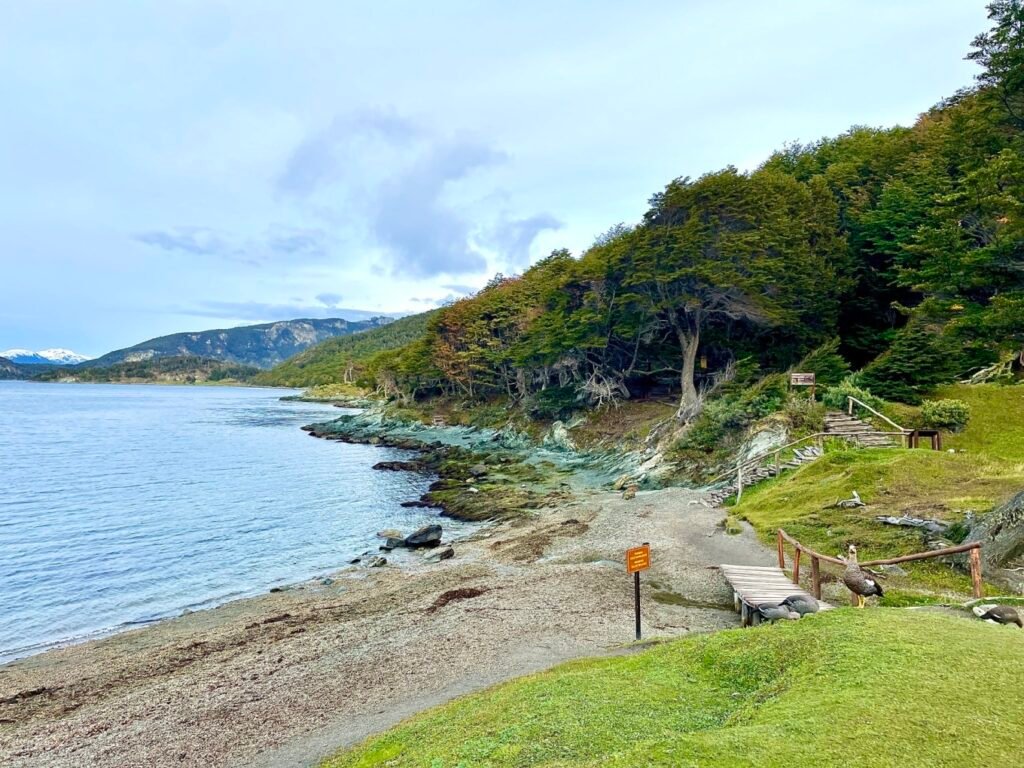
You can explore Tierra del Fuego National Park in two ways:
- Group Tour: Book a day tour in Ushuaia. You’ll travel by tour bus, stopping at major attractions, and after visiting each spot, you’ll move on to the next. You can also take a small train through the park at the end. The whole tour takes about half a day and offers a relaxed way to see the park.
- Self-Guided: Buy shuttle tickets and plan your own itinerary based on the shuttle stops. This option allows for longer, more in-depth hikes to fully experience Tierra del Fuego’s beauty, though it can be tough on your legs.
Hiking Guide:
As shown in the map, Tierra del Fuego has three main hiking trails.There are also other less mainstream routes not detailed here.
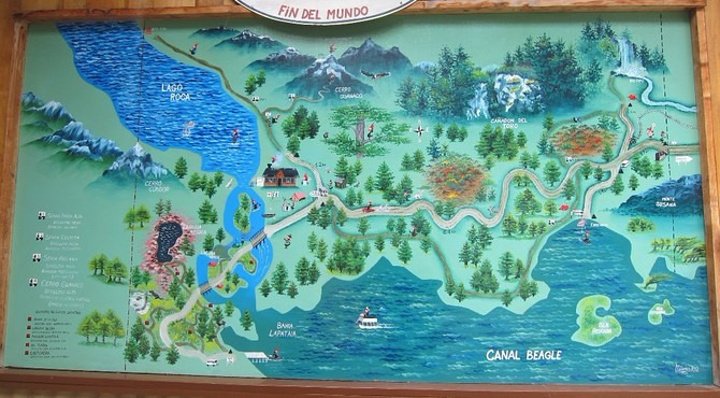
The hike starts at the southernmost post office in the world 🏤and ends at the Lago Acigami lakeside restaurant. The entire route is 8 kilometers, mostly following the shores of Bahia Lapataia Lake, and includes a trek through pristine forests.

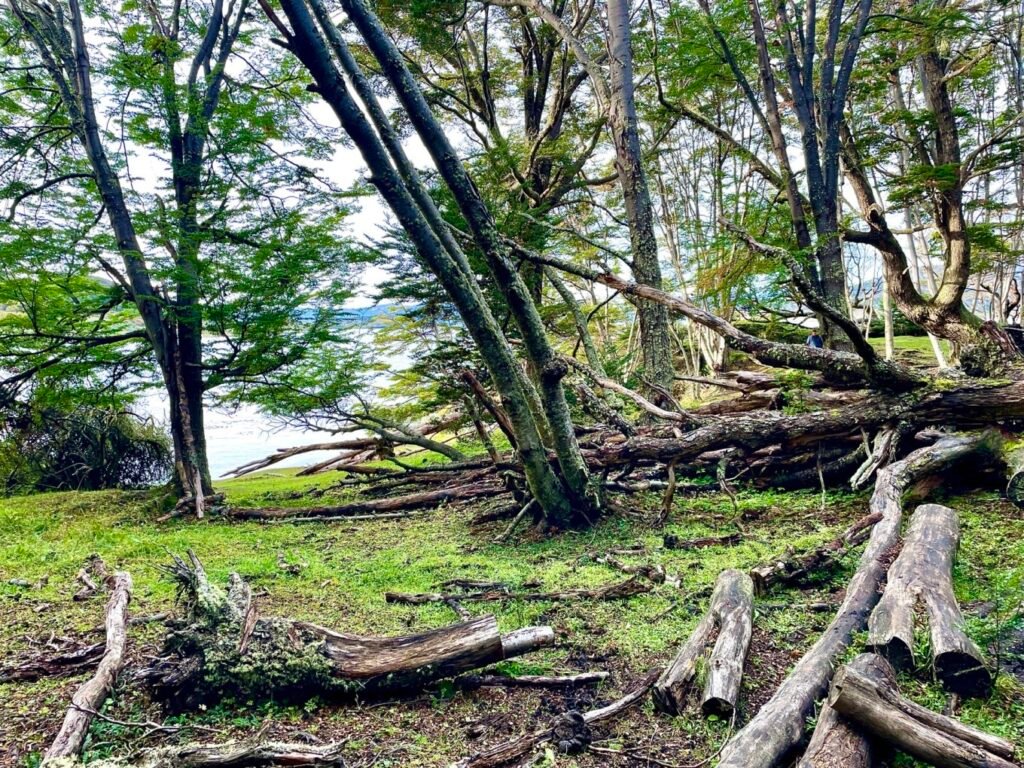
The Number 2 trail starts from the path by Lago Acigami and climbs to the top of the snow-capped peak. Even though it’s only 900 meters high, our driver said it takes at least 8 hours round trip. The slopes are super steep, over 40 degrees, so it’s a really tough climb.
The Number 3 trail goes south from Lago Acigami, winding between the lake and the mountains. It continues past the end of Panamerican Route 3 and goes south until it hits the park boundary. The whole trail is about 7.5 kilometers.


The shuttle bus stops at the following points: first stop is the post office, second stop is the Lago Acigami lakeside restaurant, and third stop is the end of Panamerican Route 3. Buses run only before 10 AM and after 3 PM. You’ll need to confirm the exact times with the driver. You can arrange to return from a specific stop, and the driver will remember you. Make sure to choose your hiking trail based on the shuttle bus stops and times.

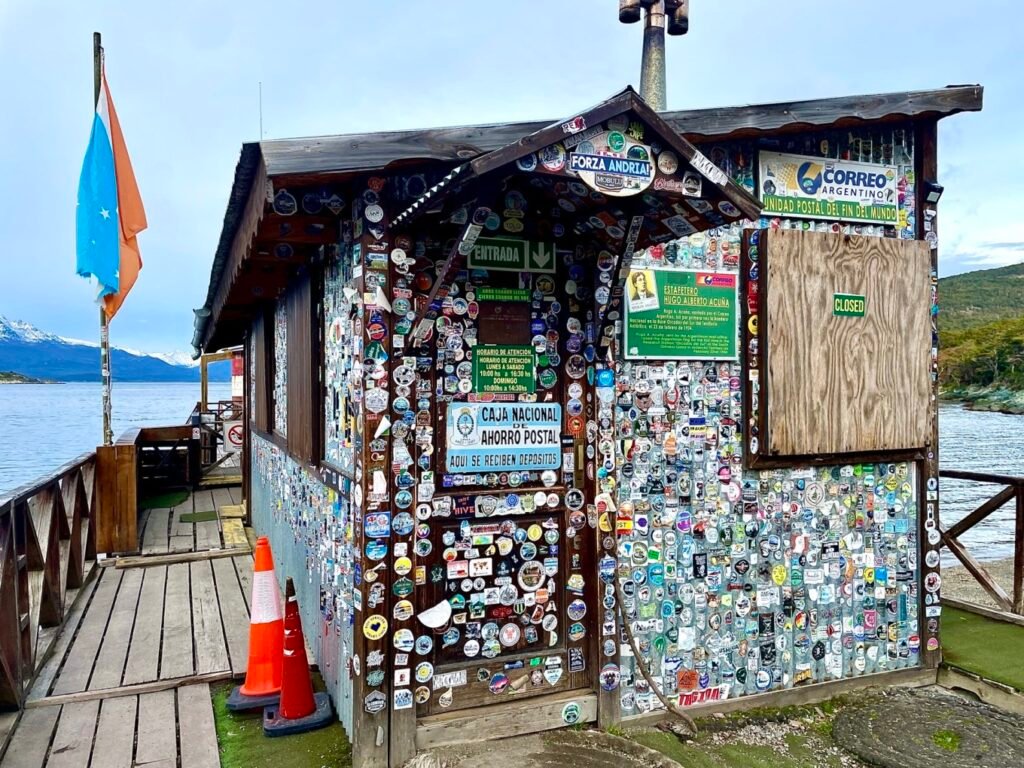
The southernmost post office in the world
This post office is quite famous. You can buy postcards here, and the elderly gentleman working there will stamp them with a special postmark. However, since he’s quite old, it’s not guaranteed to be open every day. When I visited, it was closed, which was a bit disappointing.
Dining and Transportation in Tierra del Fuego National Park
Within the park, the only place to eat is the lakeside restaurant at the second stop, so it is recommended to bring food along for a picnic during your hike. The shuttle bus to the park costs 20,000 pesos, with tickets available at the bus station west of the port, where many white buses are parked, making it easy to find. The park entrance fee is 12,000 pesos, payable in cash or by card.
The small train, originally used to transport prisoners, now offers scenic tours for visitors. Tickets must be purchased in advance on the official website, and you’ll need to exchange them for boarding passes at the station. The train departs from a station outside the park and ends near the post office, providing a unique way to experience the area’s history and landscapes.
54.87°S: A Journey to the Lighthouse at the End of the World
After an exhausting but invigorating hike through Tierra del Fuego National Park, today’s goal was to visit the iconic Lighthouse at the End of the World and make it official with a check-in. To reach the lighthouse, tickets must be purchased from a travel agency near the port, costing 45,000 pesos. The entire trip takes about three hours, and although the boat is large, it’s best to book tickets in advance to secure a spot. Boarding starts half an hour before departure, and you can choose to sit inside the cabin or enjoy the open air outside.
The first stop is the Lighthouse at the End of the World, its red-and-white stripes standing out vividly against the deep blue sky and sea. As I checked my phone’s GPS, it confirmed the latitude at 54.87°S—a surreal moment at the southernmost point I could reach.
Over the past few days, I’ve watched the Antarctic cruise ships come and go, each departure stirring a mix of admiration and envy. I couldn’t help but feel a bit of regret, longing to join those fortunate enough to witness the wonders of Antarctica. Perhaps, though, this latitude—54.87°S—is the southernmost limit of my journey, a point where adventure meets introspection at the very edge of the world.


On the return journey, we were met with an unexpected surprise—pods of dolphins leaping and playing in the waves. It was an incredible stroke of luck, turning the already unforgettable trip into something truly magical.


💡TIPS:
1️⃣ The boat is very stable, and the waves in the bay are minimal, so seasickness is unlikely. The guide provides explanations in both English and Spanish, so not speaking Spanish is no problem.
2️⃣ The travel agency also offers tours to see penguins, but these are only available in the summer. I noticed that tours were still running in late March, but they stop by early April.


